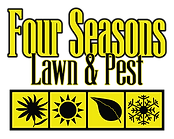Unwanted Guests: Identifying and Treating Common Lawn Pests in the Inland Northwest
- Tyson Woodbury
- Feb 29, 2024
- 3 min read
Hey there, fellow residents of the beautiful Inland Northwest! As your local lawn care and pest control experts, we understand the frustration that comes with dealing with unwanted visitors in your yard and as spring is quickly approaching there are some things we need to start watching for. From creepy crawlies to tiny terrors, pests can wreak havoc on your lawn if left unchecked. But fear not! In this guide, we'll walk you through identifying and treating some of the most common lawn pests in our area, so you can reclaim your green space and enjoy your outdoor oasis to the fullest.
Meet the Pests:
Grubs: These sneaky larvae of beetles can feast on the roots of your grass, causing brown patches and ultimately killing your lawn if left untreated.
Chinch Bugs: Small but mighty, chinch bugs suck the sap from grass blades, leaving behind yellow or brown patches that resemble drought stress.
Armyworms: Don't let their name fool you; these voracious caterpillars can march through your lawn in armies, devouring grass blades and leaving behind barren patches.
Sod Webworms: The larvae of lawn moths, sod webworms chew through grass stems and create unsightly brown spots, especially in the warmer months.
Ants: While not directly harmful to your lawn, ants can build unsightly mounds and create underground tunnels that disrupt grass roots and soil structure.
Identifying the Problem: Spotting signs of a pest infestation early is key to preventing extensive damage to your lawn. We encourage everyone to start watching their lawn in the early weeks of spring to catch any issue before they escalate. Keep an eye out for:
Brown or yellow patches of grass that don't respond to watering or fertilization.
Irregular patterns of grass damage, such as chewed edges or skeletonized leaves.
Increased insect activity, such as ants scurrying across your lawn or moths fluttering around your yard at dusk.
Spongy or squishy areas of turf, which may indicate grub activity beneath the surface.
Treatment Options:
Biological Control: Introducing natural predators, such as nematodes or parasitic wasps, can help keep pest populations in check.
Chemical Treatments: In severe cases, targeted insecticides can be applied to eliminate pests while minimizing harm to beneficial insects and wildlife. This is one of our areas of expertise, treating the problem, without causing harm to surrounding plants and insects.
Cultural Practices: Maintaining proper lawn care practices, such as regular mowing, watering, and aerating, can help strengthen your turf and make it less susceptible to pest damage.
Natural Remedies: From neem oil to diatomaceous earth, there are plenty of eco-friendly solutions available for homeowners who prefer to avoid synthetic chemicals. Many of these eco friendly options can be found at your local home and garden or hardware store.
Prevention Tips:
Keep your lawn healthy and vigorous through proper watering, fertilization, and soil management.
Minimize thatch buildup by dethatching your lawn regularly.
Avoid overwatering, as soggy soil can attract certain pests like grubs and chinch bugs.
Implement a regular inspection routine to catch pest problems early before they spiral out of control.
Conclusion: Don't let lawn pests put a damper on your outdoor enjoyment! By learning to identify common pests and implementing proactive treatment and prevention strategies, you can keep your lawn looking lush and vibrant all season long. If you ever find yourself overwhelmed by pesky invaders, don't hesitate to reach out to us, local lawn care and pest control experts, for assistance. Together, we'll ensure that your yard remains a haven of beauty and tranquility for years to come. Happy gardening!

.png)




Comments